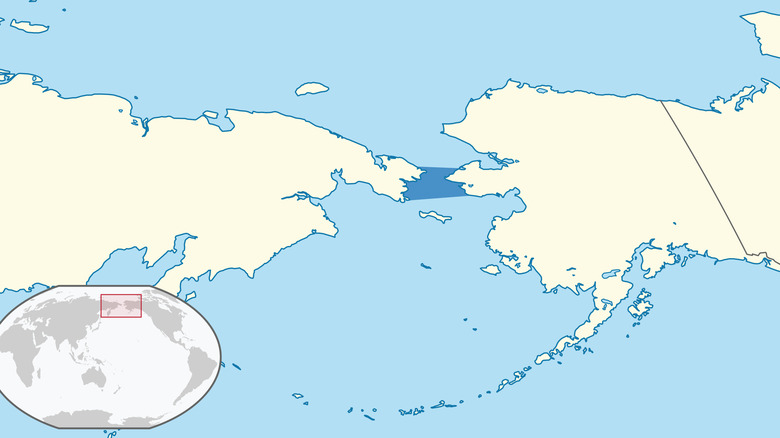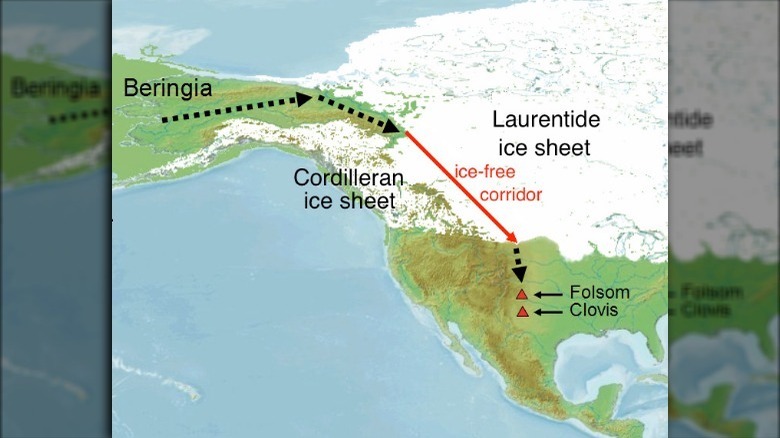What Indigenous People Think About The Bering Strait Theory
It's a theory you may have learned as early as 3rd grade: the indigenous people of North and South America first arrived in the Western Hemisphere by crossing over from Russia into Alaska some 15,000 years ago. Today, the two landmasses are separated by the Bering Strait but were once connected by a (now-submerged) land bridge that allowed these ancient humans to cross into the Americas on foot.
This theory has become so ubiquitous that you probably accept it as a historical fact. And yet — as with most of what we think we know about ancient human history — it is still a theory after all.
In recent history, Native American groups and experts alike have begun to cast doubt on this origin story. As Voice of America reports, indigenous experts like Alexander Ewen, a historian and member of the Purepecha Nation, view the current Bering Strait theory as "simplistic" and rooted in the view that indigenous Americans were "primitive."
As Ewen notes, European scholars refused to believe that the ancestors of modern Native Americans could have possessed the required expertise to sail to the Americas millennia before the Vikings and Christopher Columbus performed the same feat. So, these historians searched instead for a possible land route to the Americas and found the Bering Strait. In reality, the true origins of humans in the Americas may be a lot more complicated.
Some theorize the first people in the Americas sailed here
First, what do the oral traditions of indigenous American tribes say about their own origins? According to Voice of America, these oral histories vary greatly depending on the tribe in question. For example, the tradition of Montana's Blackfoot tribe suggests that their ancestors did indeed cross into the Americas via an icy crossing in the far north, whereas Arizona's Hopi people believe that their ancestors crossed over the ocean itself.
Likewise, archeologists are divided on the question of how the first people came into the Americas. Most experts still support the Bering Strait theory, but others have suggested that humans arrived in the Americas far earlier than previously believed — possibly long before the Bering Strait was even crossable, per Voice of America.
Likewise, in 2015 a Harvard University geneticist found a possible genetic link between the indigenous people of the Amazon and the native people of Australia and New Guinea. This could suggest that some — or all — Native American people originally arrived via sailing routes in the South Pacific, not by a land bridge in the north.
According to National Geographic, some have even suggested that the first indigenous Americans sailed from Europe during the Stone Age. In the absence of a definitive origin story, National Geographic adds, historians are becoming more open to the idea that the peoples of the Americas came in waves via different routes rather than all descending from a single group that crossed into Alaska many millennia ago.

